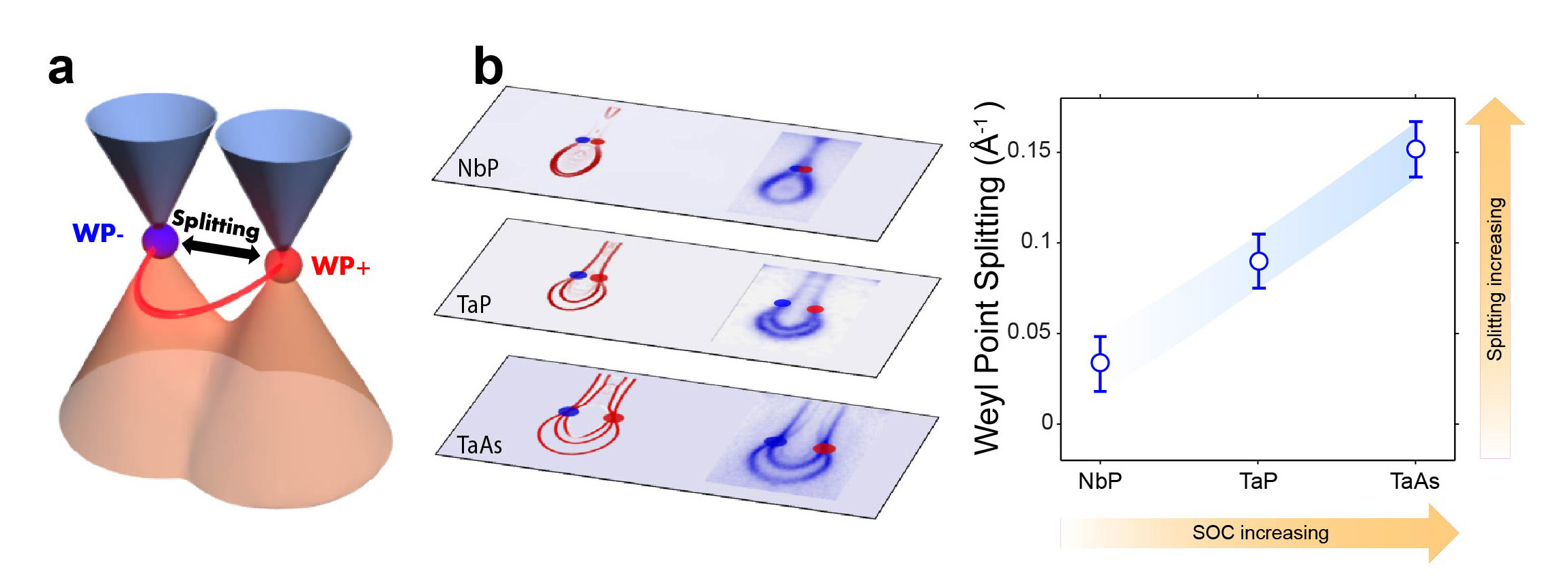A long-sought exotic particle from the realm of high-energy physics, the Weyl fermion, has recently been discovered in solids. Because these Weyl fermions do not bear mass, they behave like photons and can travel unusually fast and with little resistance. A team of researchers using angle-resolved photoemission spectroscopy (ARPES) at ALS Beamline 10.0.1 found these intriguing particles in a new phase of quantum matter: topological Weyl semimetals (TWSs) not only possess Weyl fermions in the bulk and unique Fermi arcs generated by topological surface states, but also exhibit appealing physical properties such as extremely large magnetoresistance and ultrahigh carrier mobility. These unusual bulk and surface electronic structures of TWSs can give rise to many exotic phenomena, such as chiral magnetic effects, negative magnetoresistance, the quantum anomalous Hall effect, novel quantum oscillations in magneto-transport, and quantum interference in tunnelling spectroscopy. The researchers investigated the electronic structures of three TWSs (NbP, TaP, and TaAs) and clearly identified the characteristic surface “Fermi arcs” in all three compounds as well as the evolution of their electronic structures, thus making a “family photo” of these unusual materials.
The discovery of this family of TWS compounds not only provides a rich material base for exploring unusual physical phenomena, it also opens the door for novel future applications, for example in the field of spintronic device development.

Work performed on ALS Beamline 10.0.1
Citation: L.X. Yang, Z.K. Liu, Y. Sun, H. Peng, H.F. Yang, T. Zhang, B. Zhou, Y. Zhang, Y.F. Guo, M. Rahn, D. Prabhakaran, Z. Hussain, S.-K. Mo, C. Felser, B. Yan, and Y.L. Chen “Weyl semimetal phase in the non-centrosymmetric compound TaAs,” Nature Physics 11, 728 (2015); Z.K. Liu, L.X. Yang, Y. Sun, T. Zhang, H. Peng, H.F. Yang, C. Chen. Y. Zhang, Y.F. Guo, D. Prabhakaran, M. Schmidt, Z. Hussain, S.-K. Mo, C. Felser, B. Yan, and Y.L. Chen, “Evolution of the Fermi surface of Weyl semimetals in the transition metal pnictide family,” Nature Materials, doi:10.1038/nmat4457.